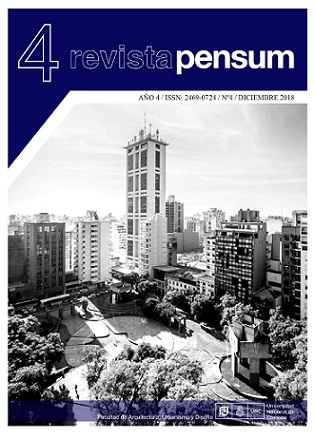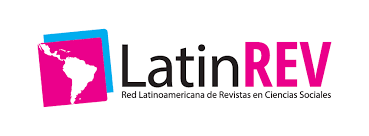Simulated evaluation of the impact of an urban real estate development
DOI:
https://doi.org/10.59047/2469.0724.v4.n4.22648Keywords:
Modelos de Simulación, Emprendimiento Urbano, ImpactoAbstract
The evaluation of the project of an Urban Real Estate development in the context of the complex city of the 21st century constitutes a study that exceeds the normative planning and the static evaluation. The proposed methodology seeks through the coupling of three types of models: systemic, precursor and simulation, integrate data and forecast possible scenarios reflecting the dynamism of the changes that occur during the life-cycle of an urban real estate project. The theoretical foundations recognize their roots in the General Theory of Systems, the Theory of Discrete Events applied to Architecture, recognizing a systemic vision applied to projects. The result obtained from the application of this methodology allows the visualization of the evolution of the most significant variables, by the different social actors affected, being able to foresee undesired effects that could be caused and in this way avoid costly modifications or malfunctions during the life cycle of an Urban Real Estate Entrepreneurship. The proposed methodology was applied to two cases of study that allowed detecting anomalies and the appearance of counterintuitive systems not detected initially.Downloads
References
Ambrosini, A. (2013). Modelos de simulación como herramienta para la generación de acuerdos urbanos entre desarrollistas y municipio. Universidad Nacional de Córdoba, Córdoba, Argentina.
Aracil, J., & Gordillo, F. (2007). Dinámica de sistemas / System Dynamics. Madrid: Alianza Editorial Sa.
Batty, M. (2013). The New Science of Cities. MIT Press.
Bertalanffy, L. von, Hofkirchner, W., & Rousseau, D. (1954). General System Theory: Foundations, Development, Applications (1 edition). New York: George Braziller Inc.
Carlo Ratti. (2018). En Wikipedia, la enciclopedia libre. Recuperado de https://es.wikipedia.org/w/index.php?title=Carlo_Ratti&oldid=109515478
Foreign Policy magazine, Redacción. (2015, mayo 14). ¿Qué fue el efecto tequila? Foreign Policy magazine (FP Group). Recuperado de https://foreignpolicyesp.wordpress.com/2015/05/14/que-fue-el-efecto-tequila/
Forrester, J. W., & Forrester, J. W. (1969). Urban dynamics (Vol. 114). mIt press Cambridge.
Friedmann, J. (2011). Insurgencies: Essays in Planning Theory (1 edition). Abingdon, Oxon ; New York, NY: Routledge.
Geddes, P. (2012). Cities in Evolution: An Introduction to the Town Planning Movement and to the Study of Civics. London: Forgotten Books.
Grupo Edisur. (s. f.). Grupo Edisur | Emprendimientos | Miradores de Manantiales. Recuperado 19 de agosto de 2018, de http://www.grupoedisur.com.ar/web/es/emprendimientos/miradores-de-manantiales/
Hannon, B., & Ruth, M. (2001). Dynamic modeling. Springer Science & Business Media. Recuperado de https://books.google.com.ar/books
ExtendSim Simulation Software. (s. f.). Recuperado 17 de agosto de 2018, de https://www.extendsim.com/
Hui Lin Michael, B. M. (2009). Virtual Geographic Environments. Beijing: China Press.
Jacobs, J. (1992). The Death and Life of Great American Cities (Reissue edition). New York: Vintage.
Johansen Bertoglio, O. (1982). Introducción a la teoría general de sistemas. Editorial Limusa.
Método de Runge-Kutta. (2017). En Wikipedia, la enciclopedia libre. Recuperado de https://es.wikipedia.org/_Runge-Kutta
MIT Senseable City Lab. (s. f.). Recuperado 20 de agosto de 2018, de http://senseable.mit.edu
Peralta, Carolina. (s. f.). Urbanismo. Recuperado 17 de agosto de 2017, de http://urbanismounlar.blogspot.com.ar/
Portugali, J., Haken, H., Benenson, I., Omer, I., & Alfasi, N. (2000). Self-Organization and the City (2000 edition). Berlin: Springer.
Pumain, D., & Reuillon, R. (2017). Urban Dynamics and Simulation Models (1st ed. 2017 edition). Cham: Springer.
Ratti, C., & Claudel, M. (2016). The City of Tomorrow: Sensors, Networks, Hackers, and the Future of Urban Life. New Haven; London: Yale University Press.
Song, H., Srinivasan, R., Sookoor, T., & Jeschke, S. (2017). Smart Cities: Foundations, Principles, and Applications (1 edition). Hoboken, NJ: Wiley.
Stella Architect. (s. f.). Recuperado 17 de agosto de 2018, de https://www.iseesystems.com/store/products/stella-architect.aspx
Torres Capitalinas. (2017). En Wikipedia, la enciclopedia libre. Recuperado de https://es.wikipedia.org/Torres_Capitalinas
Downloads
Published
How to Cite
Issue
Section
License
Authors who publish in this journal agree to the following terms:
a. Authors retain copyright and guarantee to the journal the right to be the first publication of the work as well as licensed under a Creative Commons Attribution-ShareAlike 4 license.
b. Authors may separately establish additional agreements for non-exclusive distribution of the version of the work published in the journal (e.g., placing it in an institutional repository or publishing it in a book), with an acknowledgement of its initial publication in this journal.
c. Authors are permitted and encouraged to disseminate their work electronically (e.g., in institutional repositories or on their own website) before and during the submission process, as this may result in productive exchanges, as well as earlier and greater citation of published work (See The Effect of Open Access).
d. 4.0 International Creative Commons Attribution-ShareAlike 4.0 License.












